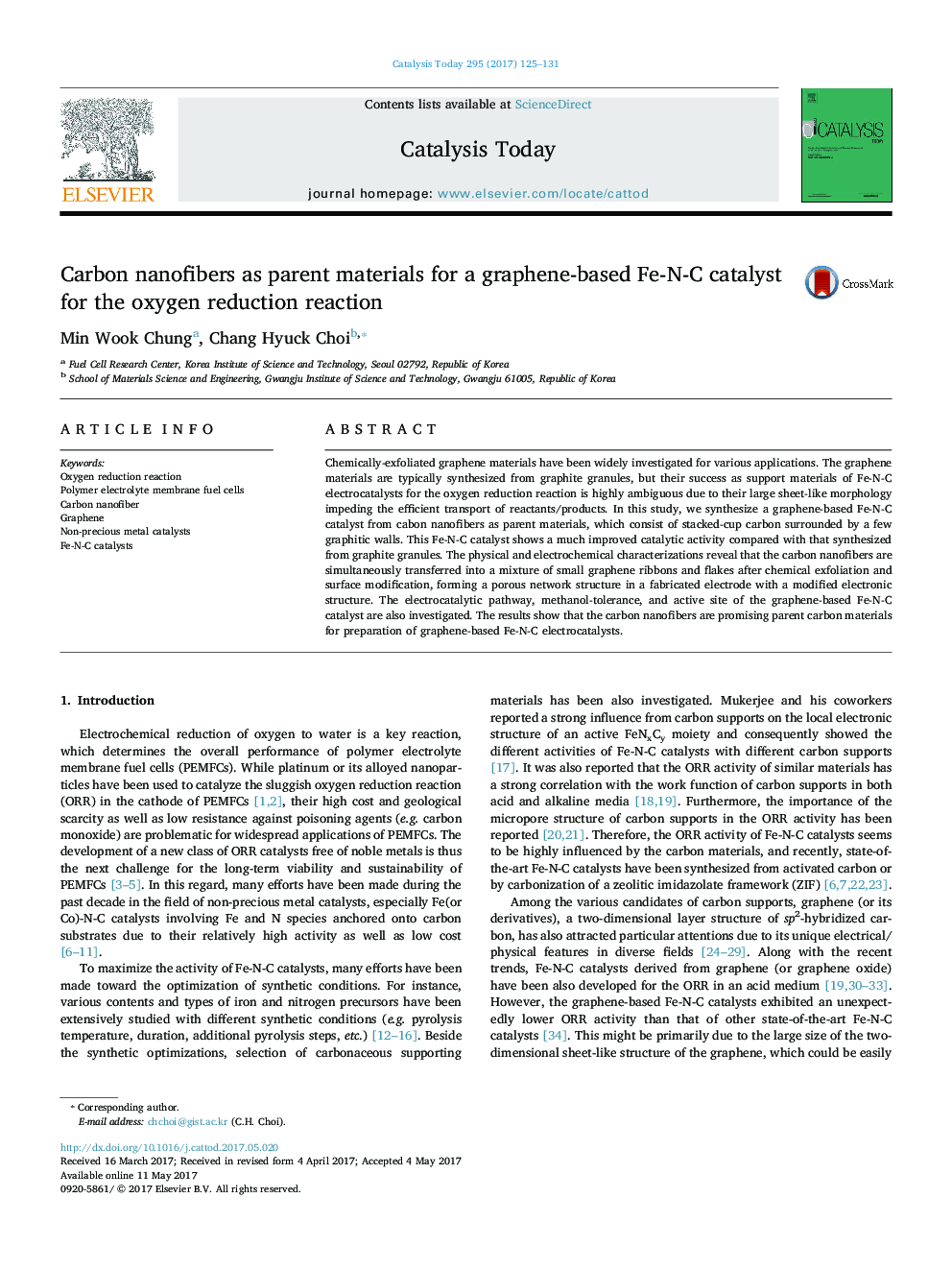| Article ID | Journal | Published Year | Pages | File Type |
|---|---|---|---|---|
| 6455228 | Catalysis Today | 2017 | 7 Pages |
â¢Fe-N-C catalyst was developed from chemically-exfoliated carbon nanofibers.â¢A porous network for efficient mass transports was constructed in the electrode.â¢The catalyst showed a considerable oxygen reduction reaction activity.
Chemically-exfoliated graphene materials have been widely investigated for various applications. The graphene materials are typically synthesized from graphite granules, but their success as support materials of Fe-N-C electrocatalysts for the oxygen reduction reaction is highly ambiguous due to their large sheet-like morphology impeding the efficient transport of reactants/products. In this study, we synthesize a graphene-based Fe-N-C catalyst from cabon nanofibers as parent materials, which consist of stacked-cup carbon surrounded by a few graphitic walls. This Fe-N-C catalyst shows a much improved catalytic activity compared with that synthesized from graphite granules. The physical and electrochemical characterizations reveal that the carbon nanofibers are simultaneously transferred into a mixture of small graphene ribbons and flakes after chemical exfoliation and surface modification, forming a porous network structure in a fabricated electrode with a modified electronic structure. The electrocatalytic pathway, methanol-tolerance, and active site of the graphene-based Fe-N-C catalyst are also investigated. The results show that the carbon nanofibers are promising parent carbon materials for preparation of graphene-based Fe-N-C electrocatalysts.
Graphical abstractDownload high-res image (342KB)Download full-size image
